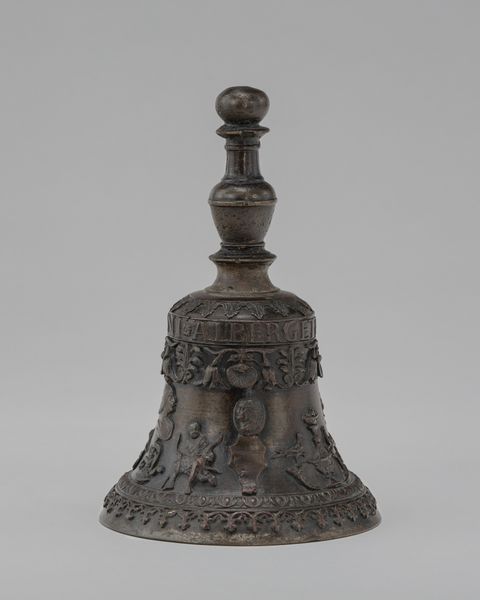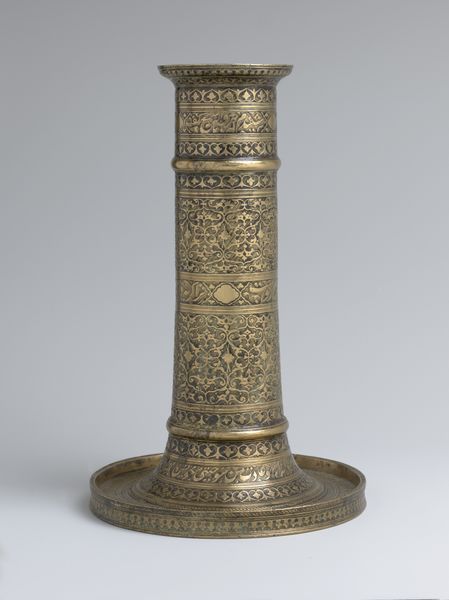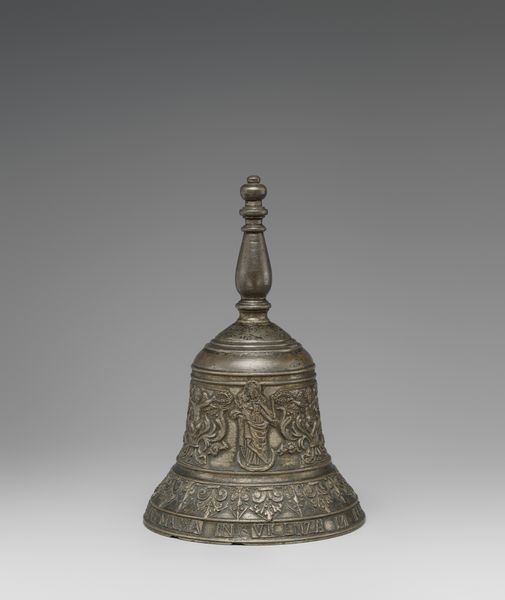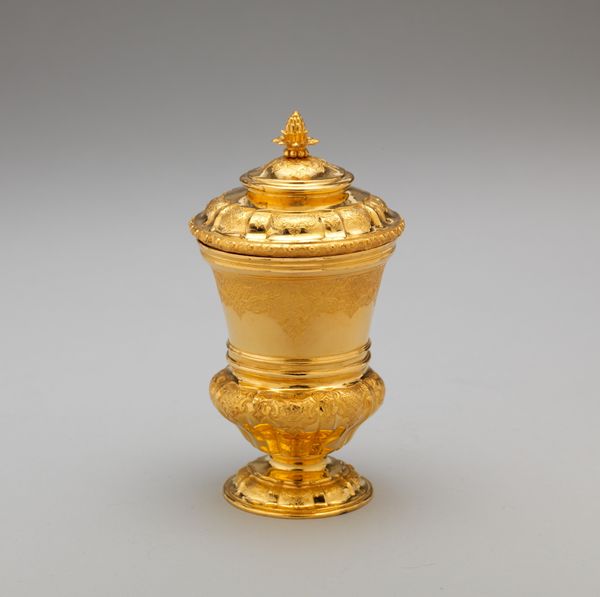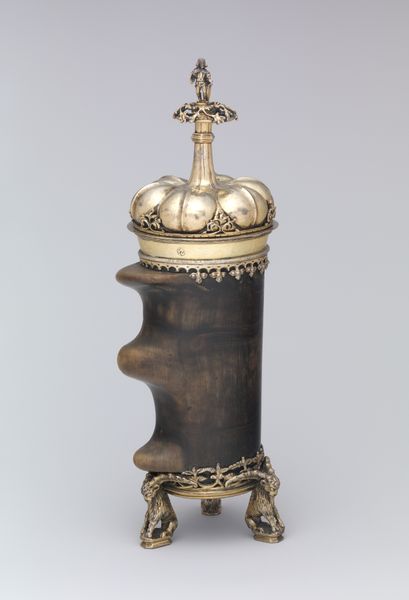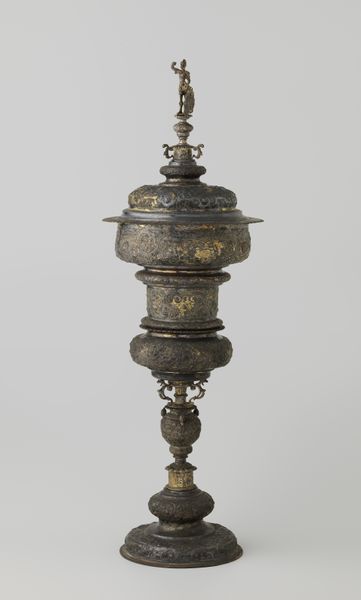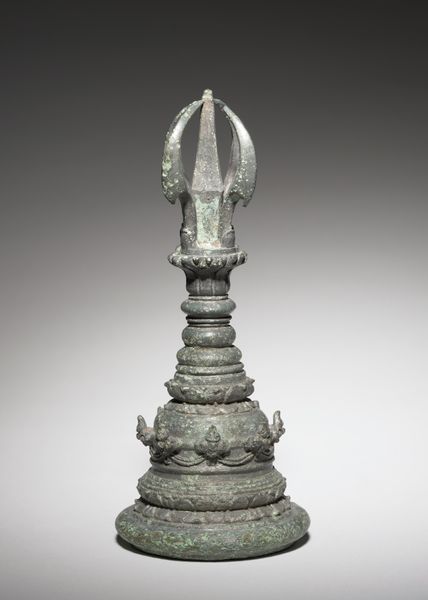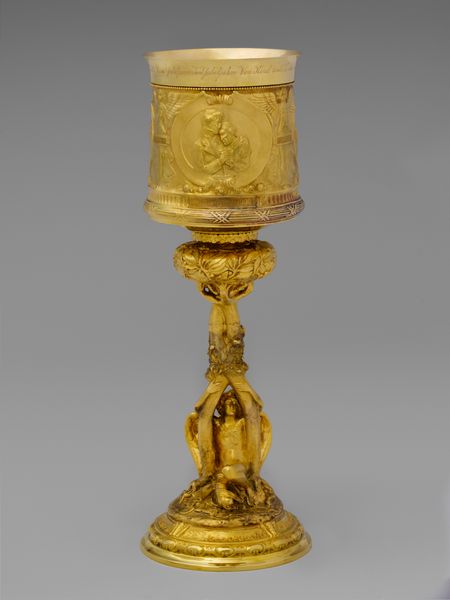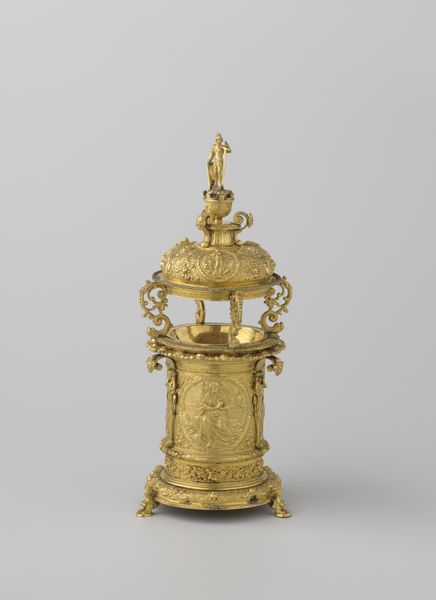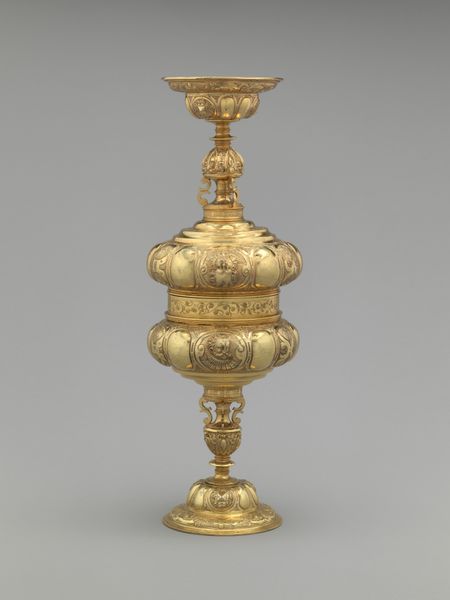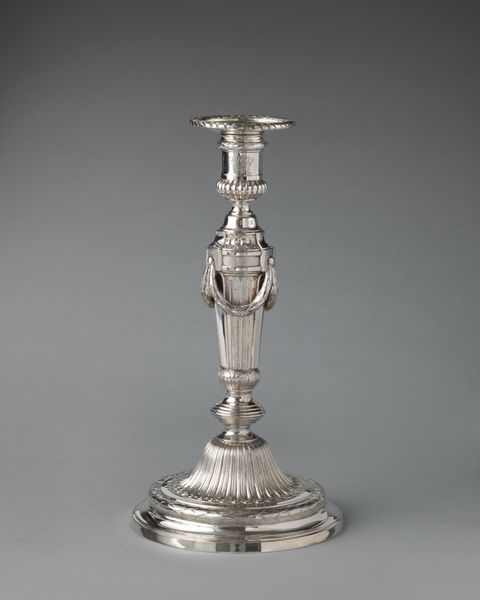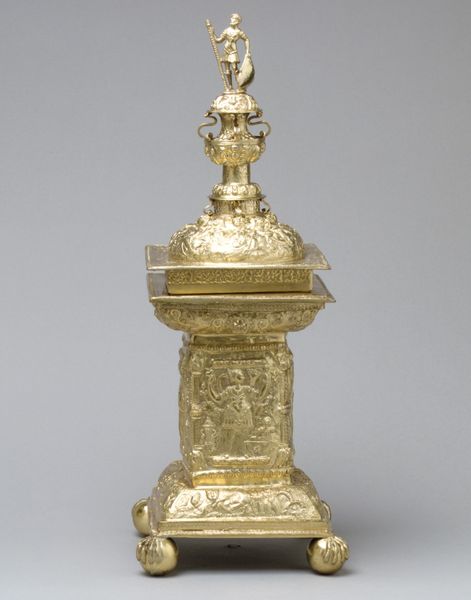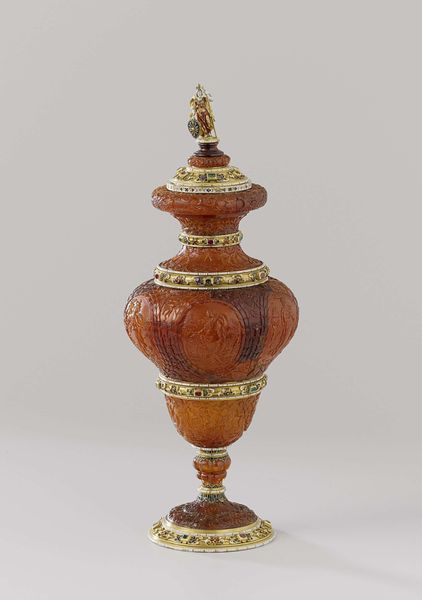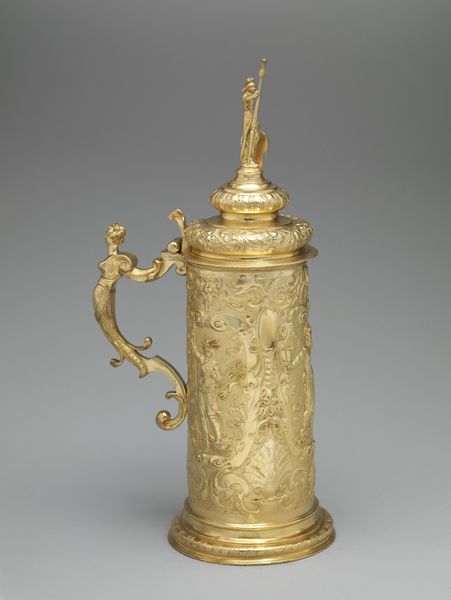
brass, sculpture
#
brass
#
medieval
#
stone
#
sculpture
#
asian-art
#
sculpture
Dimensions: 17 11/16 x 7 1/2 in. (44.9 x 19.05 cm)
Copyright: Public Domain
Editor: This is a brass sculpture titled "Chorten," dating back to around the 13th century, currently housed in the Minneapolis Institute of Art. The tiered structure is so intricate. What catches your eye when you look at this piece? Curator: The immediate emphasis lies in its geometric relationships. Note the stark contrast between the solid base and the conical, ribbed body. The interplay between these distinct shapes creates a visual rhythm. Consider the circular form at the very top, how it echoes the curvature of the base, yet also counters it with its openness. Editor: It’s almost like a visual dialogue between the different shapes. What about the material? Does the use of brass contribute to the piece's overall impact? Curator: Undeniably. The metallic sheen enhances the interplay of light and shadow, accentuating the textures and patterns meticulously crafted onto the surface. Observe how the gradations in tone, from darker recesses to brighter highlights, create a sense of depth and volume. Brass also carries inherent symbolic weight. Editor: So, the medium itself plays a significant role in understanding the artwork beyond just its appearance? Curator: Precisely. It isn't simply a question of aesthetics but also material presence. This particular alloy brings forth an entire semiotic spectrum tied to value, longevity, and the alchemical. Are the object’s components harmoniously balanced and is the application of the principles to its formal design successful? I find that it is. Editor: I'm starting to appreciate how form and material work together. Curator: Indeed. Through careful consideration of the object’s parts, what they are and what they represent, you realize there’s an extraordinary complexity and power in what may initially have appeared a somewhat understated work. Editor: Absolutely. I’ll never look at a sculpture the same way!
Comments
minneapolisinstituteofart about 2 years ago
⋮
This portable chorten (Tibetan for stupa, a domed structure that contains relics) can be understood as a three-dimensional mandala. The dome-shaped base derives from the hemispherical burial mounds erected over the relics of the Buddha. These architectural structures sprinkle the landscape of the Himalayas as representations of the Buddha, his teachings, and a microcosm of the universe. It is said the first mandala was created when devotees walked a pathway around the stupa, forming concentric circles along which they physically and mentally ascended toward the center— the cardinal axis representing enlightenment. On this shrine, which would have likely been donated to a monastery, the tower of discs represents the 13 stages of enlightenment in the Kadem Order of Tibetan Buddhism. The crescent moon and sun symbolize the dissolution of opposites, a critical aspect of wisdom.
Join the conversation
Join millions of artists and users on Artera today and experience the ultimate creative platform.
